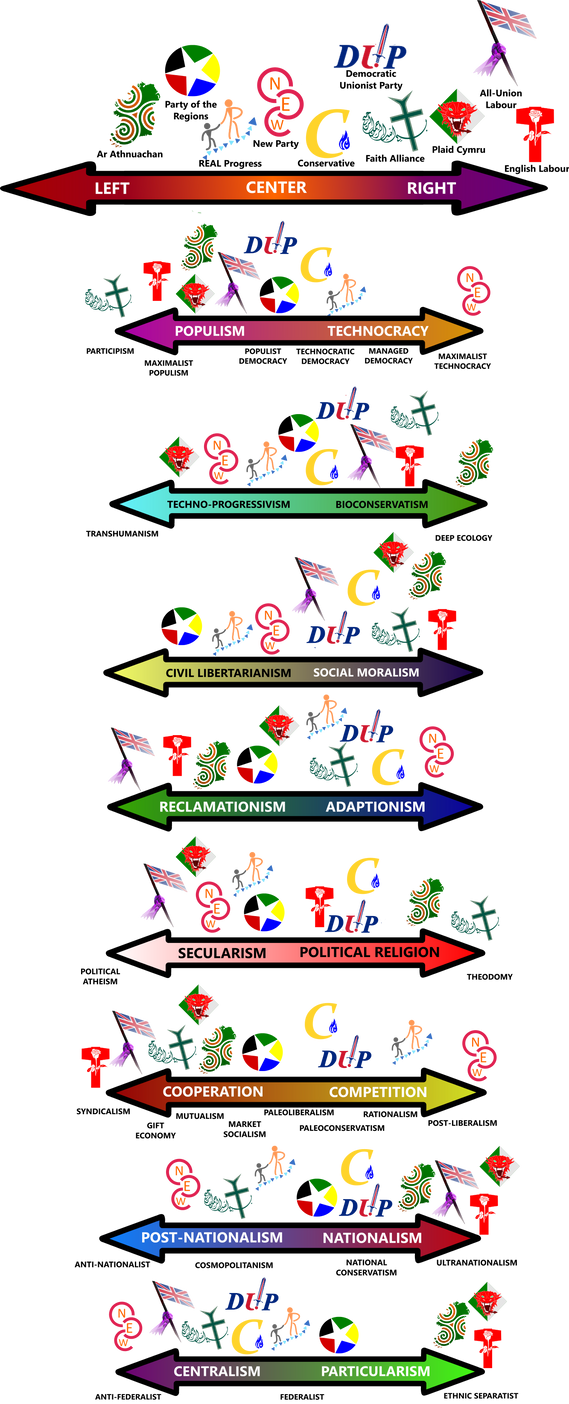Hapsburg
Banned
The emblem or logo of the National Humanist Imperial Labor Party, a nationalist, integralist and anti-alien political party in my setting.
The NHILP arises in 3015 from the ashes of the Empire of Man Party, and gradually builds itself up as the predominant party in the Terran Empire. It suffers setbacks, especially in its first century of existence, but after achieving electoral success and the patronage of wealthy spacer and colonial industrialists in the middle 3100s, it is able to institute itself into a position of power as part of a coalition government headed by the Terran aristocrats and conservatives. Through voter intimidation, parliamentary walkouts, filibusters, and a good-old-fashioned police state, they seize absolute power in the last few decades of the Terran Empire after having already come to dominate local and provincial elections in the colonies. It becomes itself overtaken by a new generation of radical republican leaders starting the 3250s and they eventually orchestrate a galaxy-wide war that sees the total victory of the Empire and its allies followed immediately by their merger and dissolution into a totalitarian Republic where political parties are banned as a threat to the government.
The globe represents Earth, the cradle of humanity and centre of the Terran civilisation. The sheaves of wheat around it represent prosperity and growth, as well as the produce of the Terran labourer. The red star above the Earth is the eternal glow of revolution, guiding the Party forward. Below is draped a flag with the three colours of Terra: white, green, and blue. On an open tome reads the words "Mankind, Forwards", the Party motto.

The NHILP arises in 3015 from the ashes of the Empire of Man Party, and gradually builds itself up as the predominant party in the Terran Empire. It suffers setbacks, especially in its first century of existence, but after achieving electoral success and the patronage of wealthy spacer and colonial industrialists in the middle 3100s, it is able to institute itself into a position of power as part of a coalition government headed by the Terran aristocrats and conservatives. Through voter intimidation, parliamentary walkouts, filibusters, and a good-old-fashioned police state, they seize absolute power in the last few decades of the Terran Empire after having already come to dominate local and provincial elections in the colonies. It becomes itself overtaken by a new generation of radical republican leaders starting the 3250s and they eventually orchestrate a galaxy-wide war that sees the total victory of the Empire and its allies followed immediately by their merger and dissolution into a totalitarian Republic where political parties are banned as a threat to the government.
The globe represents Earth, the cradle of humanity and centre of the Terran civilisation. The sheaves of wheat around it represent prosperity and growth, as well as the produce of the Terran labourer. The red star above the Earth is the eternal glow of revolution, guiding the Party forward. Below is draped a flag with the three colours of Terra: white, green, and blue. On an open tome reads the words "Mankind, Forwards", the Party motto.
Last edited:

